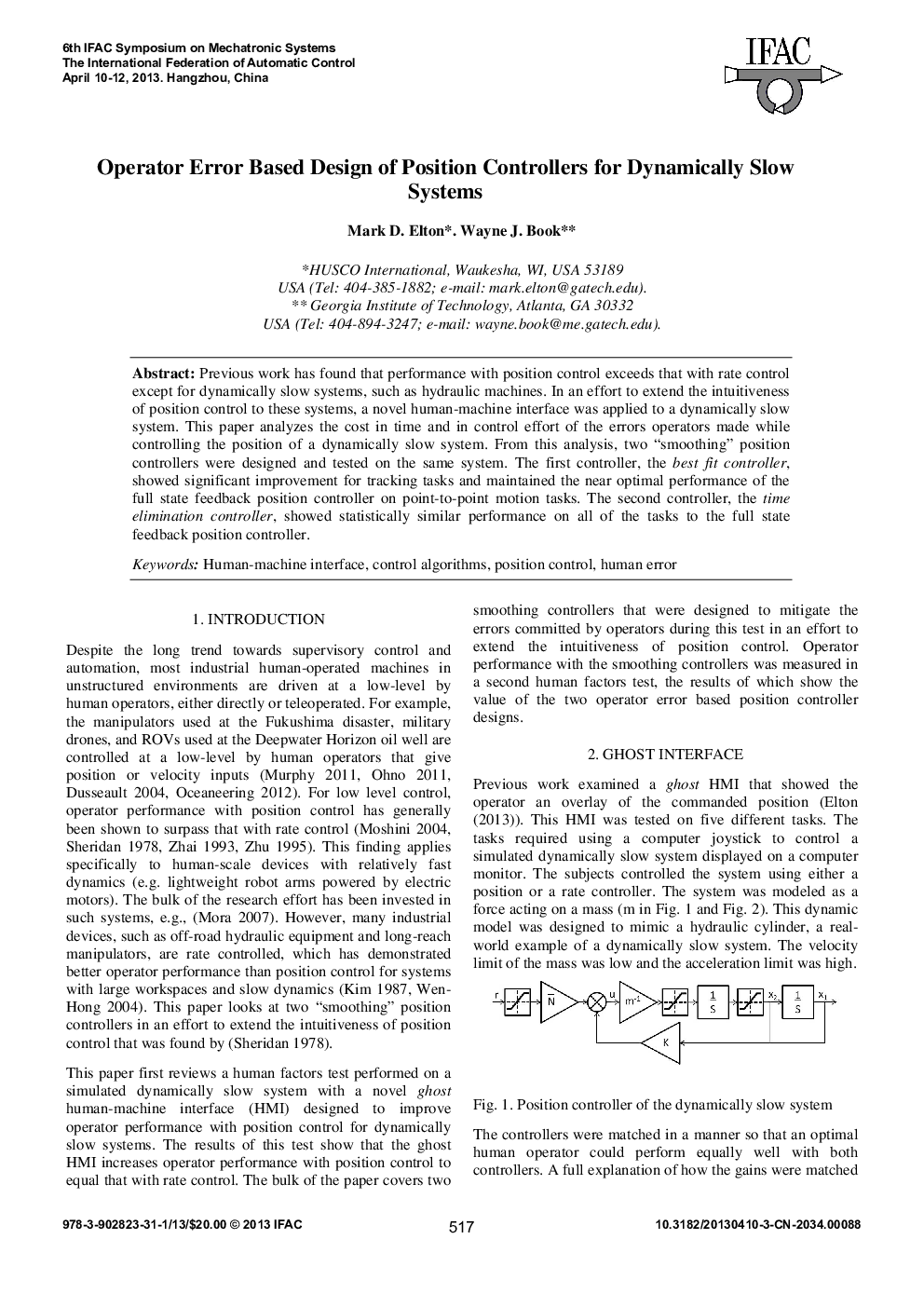| Article ID | Journal | Published Year | Pages | File Type |
|---|---|---|---|---|
| 709521 | IFAC Proceedings Volumes | 2013 | 6 Pages |
Previous work has found that performance with position control exceeds that with rate control except for dynamically slow systems, such as hydraulic machines. In an effort to extend the intuitiveness of position control to these systems, a novel human-machine interface was applied to a dynamically slow system. This paper analyzes the cost in time and in control effort of the errors operators made while controlling the position of a dynamically slow system. From this analysis, two “smoothing” position controllers were designed and tested on the same system. The first controller, the best fit controller, showed significant improvement for tracking tasks and maintained the near optimal performance of the full state feedback position controller on point-to-point motion tasks. The second controller, the time elimination controller, showed statistically similar performance on all of the tasks to the full state feedback position controller.
